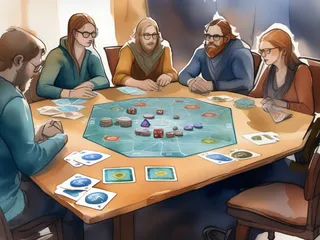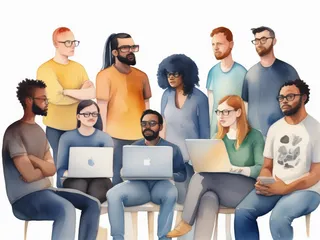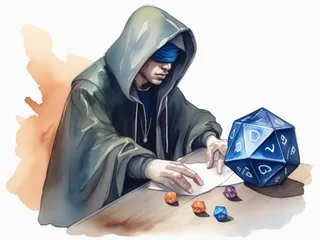Agile ceremonies can feel like navigating a social minefield when you're neurodivergent. The constant context switching, sensory overload, and unstructured discussions that energize neurotypical teammates might drain your focus and leave you feeling disconnected from the process.
But here's what I've learned from years of facilitating scrum events and working with brilliant neurodivergent developers: your brain isn't broken, and Agile ceremonies aren't fundamentally incompatible with how you think. You just need the right playbook.
Let's reframe this. Your pattern recognition abilities, attention to detail, and systematic thinking aren't obstacles to overcome in Agile—they're superpowers waiting to be unleashed. The key is creating structures that work with your neurodivergent strengths, not against them.
The Developer's Playbook: Strategies That Actually Work
Pre-Meeting Preparation: Your Secret Weapon
The chaos of unprepared meetings hits neurodivergent developers hardest. Here's how to flip that script:
Create your ceremony prep ritual:
- Review the agenda 24 hours before (ask for one if it doesn't exist)
- Prepare talking points in a structured format—bullet points work well
- Set up your physical environment: noise-canceling headphones, fidget tools, preferred seating
- Block 15 minutes before each ceremony for mental preparation
Build your sprint artifact reference sheet:
- Keep a running document with current sprint goals, your tasks, and blockers
- Include relevant ticket numbers and technical context
- Update it daily so you're never caught off-guard
I've seen developers transform from silent participants to engaged contributors simply by having their context organized beforehand. You're not being "extra"—you're being strategic.
Managing Sensory Overload During Standups
Standups can be overwhelming when everyone's talking over each other or when you're processing multiple audio streams. Here's your toolkit:
Control your sensory environment:
- Use noise-canceling headphones during remote standups
- Position yourself away from high-traffic areas in office settings
- Keep a fidget toy or stress ball for self-regulation
- If possible, request camera-optional meetings when you need to focus on audio
Develop your standup format:
- Create a consistent structure: "Yesterday I [specific accomplishment], today I'm [specific plan], my blocker is [if any]"
- Write your update beforehand if verbal processing is challenging
- Use the chat function to share updates if speaking feels overwhelming
Advocate for structured communication:
- Suggest round-robin format instead of popcorn style
- Request that blockers be discussed after all updates
- Propose time-boxing individual updates (2 minutes max)
Sprint Planning: Where Pattern Recognition Becomes Your Superpower
Sprint planning is where neurodivergent developers often shine, but only if the ceremony is structured properly. Your ability to see dependencies, edge cases, and system interactions that others miss is invaluable here.
Leverage your systematic thinking:
- Create visual maps of story dependencies before planning
- Prepare questions about acceptance criteria and edge cases
- Bring up technical debt or architectural concerns that impact estimates
- Use your pattern recognition to identify similar stories from previous sprints
Manage the planning chaos:
- Request that requirements be shared in advance
- Ask for story details to be documented, not just discussed verbally
- Suggest breaking down large stories during pre-planning, not during the ceremony
- Advocate for consistent estimation techniques (Planning Poker, T-shirt sizes, etc.)
Technical advocacy strategies:
- Come prepared with architectural diagrams if discussing complex features
- Highlight cross-team dependencies that others might miss
- Suggest spikes for unclear technical requirements
- Push back on unrealistic timelines with data from similar past work
Retrospectives: Making Continuous Improvement Actually Continuous
Retrospectives can be goldmines for process improvement when they work with neurodivergent thinking patterns.
Prepare your observations:
- Keep a running retrospective notes document throughout the sprint
- Focus on specific, measurable observations rather than feelings
- Come with 2-3 concrete improvement suggestions
- Document what worked well, not just what didn't
Navigate the emotional aspects:
- It's okay to focus on process improvements rather than team dynamics
- Prepare neutral language for sensitive feedback
- Suggest anonymous input methods if speaking up feels challenging
- Remember: your logical approach to problems is valuable, even if it differs from others
The Scrum Master's Playbook: Creating Accessible Ceremonies
As a Scrum Master, your job isn't just facilitating meetings—it's creating an environment where every team member can contribute their best work. Here's how to make your ceremonies genuinely inclusive for neurodivergent developers.
Setting Up Accessible Meeting Structures
Preparation is inclusion:
- Send agendas 24-48 hours in advance with clear objectives,
- For recurring meetings (like daily stand-ups), provide a standing agenda template and clarify any deviations ahead of time.
- Share relevant documents before the meeting, not during
- Provide consistent meeting formats and timing
- Create meeting norms that everyone agrees to follow
Design sensory-friendly environments:
- Allow camera-optional participation for remote teams
- Keep background noise minimal during in-person meetings
- Use consistent lighting and seating arrangements
- Respect requests for accommodations without making them justify needs
Structure discussions for clarity:
- Use round-robin instead of open discussion for updates
- Time-box individual contributions
- Summarize decisions and action items before moving to new topics
- Provide multiple ways to contribute (verbal, chat, written)
Creating Psychological Safety for Different Communication Styles
Not everyone processes information or communicates in the same way. Your job is making space for all thinking styles.
Accommodate processing differences:
- Allow thinking time before requiring responses
- Accept written preparation as valid participation
- Don't mistake quiet participation for disengagement
- Create space for follow-up conversations after meetings
Value different types of contributions:
- Recognize that detailed technical concerns prevent future problems
- Appreciate systematic thinking and pattern recognition
- Give credit for thorough preparation and documentation
- Understand that some team members contribute more through work than words
Establishing "Accessibility Agreements" with Your Team
Work with your team to create explicit agreements about how you'll run ceremonies. This isn't about singling anyone out—it's about creating clarity that benefits everyone.
For Scrum Masters looking to implement these approaches systematically, the principles in Crafting the Perfect Sprint Retrospective can be adapted to create more inclusive planning sessions for all ceremony types.
Sample accessibility agreements:
- "We'll share agendas 24 hours before meetings"
- "Updates will follow a consistent format: yesterday, today, blockers"
- "Technical discussions will include visual aids when helpful"
- "We'll use chat for questions during presentations"
- "Follow-up conversations are welcome for complex topics"
Implementation strategies:
- Present these as team improvements, not accommodations
- Get buy-in from the whole team, not just neurodivergent members
- Review and adjust agreements regularly
- Model the behaviors you want to see
Recognizing and Leveraging Neurodivergent Strengths
Your neurodivergent team members aren't just participants to accommodate—they're often your most valuable contributors to process improvement.
In sprint planning:
- Ask for their input on technical dependencies
- Leverage their pattern recognition for better estimates
- Trust their concerns about edge cases and system interactions
- Use their systematic thinking to improve story breakdown
In retrospectives:
- Value their detailed observations about process inefficiencies
- Ask for their analysis of what's working and what isn't
- Incorporate their suggestions for systematic improvements
- Recognize their contributions to team learning
In daily standups:
- Appreciate concise, factual updates
- Trust that they're tracking their work carefully
- Use their awareness of blockers to improve team flow
- Learn from their approach to task organization
Building Long-Term Success
Thriving in Agile ceremonies isn't about changing who you are—it's about creating structures that let you contribute your best work. Whether you're a developer advocating for your needs or a Scrum Master designing inclusive ceremonies, the goal is the same: making Agile work for everyone.
For developers: Your systematic thinking, pattern recognition, and attention to detail aren't obstacles to Agile success—they're exactly what teams need to build better software. The key is finding ways to share these strengths that work with your communication style and energy levels.
For Scrum Masters: Creating accessible ceremonies isn't extra work—it's better facilitation. When you design meetings that work for neurodivergent team members, you create clarity and structure that benefits everyone.
TL;DR: Your Agile Accessibility Checklist
Developers:
- ✅ Prepare talking points and context before ceremonies
- ✅ Control your sensory environment (headphones, seating, fidgets)
- ✅ Use your pattern recognition in planning and retrospectives
- ✅ Advocate for structured communication formats
- ✅ Document your observations and suggestions
Scrum Masters:
- ✅ Share agendas and materials 24-48 hours in advance
- ✅ Create sensory-friendly meeting environments
- ✅ Use structured discussion formats (round-robin, time-boxing)
- ✅ Establish accessibility agreements with your team
- ✅ Recognize and leverage neurodivergent strengths
Remember: accommodation isn't about making exceptions—it's about removing barriers so everyone can do their best work. Your neurodivergent perspective isn't something to overcome in Agile ceremonies; it's something that makes them better.





